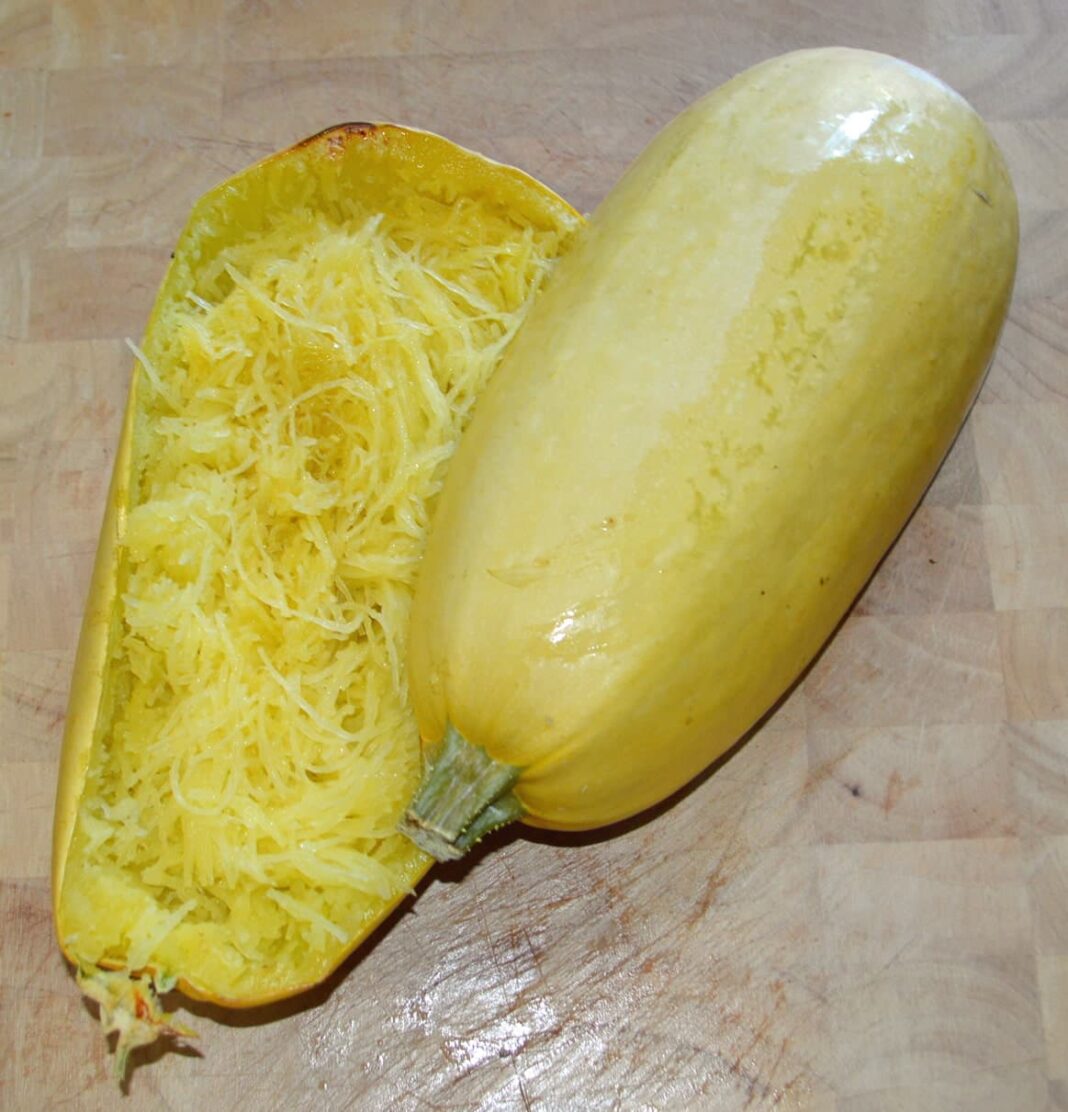Spaghetti squash, Cucurbita pepo, is a delicious novelty in the summer veg patch – once boiled or baked the flesh scoops out into delightful spaghetti-like strands.
Spaghetti squash is easy to grow, with each plant producing around five plump fruit, up-to 1.8kg each.
Simply sow direct several seeds approximately 20mm deep, once the frosty weather has passed, in a well-drained soil rich in organic matter.

Thin back to the two strongest seedlings and allow 70cm between plantings.
Plants can be grown vertically on a support, which is perfect for blocking out hot afternoon sunlight from west-facing windows; they are also just as at home creeping along the ground as a weed-suppressing groundcover.
Water and fertilise your spaghetti squash reliably to ensure a sizeable harvest, preferably using organic fertilisers which are beneficial to soil health.
Fruit is ready to pick at around 15 weeks when it takes on a yellow hue and can then be stored in a cool dry place for 4-6 weeks.
If you would like to save seed from this sometimes hard to find plant, there needs to be no related species within a 400m radius (such as zucchini).
Otherwise, hand pollination and caging is required – a fun task which is easier to carry out than you might expect.
Check out The Seed Savers’ Handbook (1993) by Michel & Jude Fanton.
Spaghetti squash is simple to prepare for baking – cut in half lengthways with a sharp and sturdy knife, scoop out the seeds and season with salt pepper and olive oil. Bake in a moderate fan-forced oven for 40 to 50 minutes.
To work its low-carb spaghetti magic, scrape the flesh out with a fork.
Spaghetti squash can be used as a health-conscious pasta substitute, as a base for quiche, or a side dish.
Summer Pruning of Fruit Trees
Many deciduous fruit trees with an established framework can be pruned during summer after harvest.

Although not essential, pruning fruit trees has many advantages, such as, creating a stronger framework resistant to branch damage; increased air circulation meaning reduced incident of pest and disease problems; increased sunlight received to all parts of the tree, which improves fruit production and size; and maintained height for ease of harvest.
Summer pruning restricts plant height and promotes fast healing of pruning cuts (especially important with species susceptible to ‘bleeding’ and fungal disease).
Summer pruning of fruit trees includes the maintenance of framework branches and removal of any new vigorous growth from the centre of the tree.
Avoid carrying out extensive pruning during exceptionally hot weather, to prevent burning newly exposed foliage or causing undue stress to the tree.
Once a summer pruning routine has been established, minimal if any winter pruning will be required.
All pruning work should be carried out using quality and appropriate pruning tools, that is, the right tool for the diameter of material being cut.
It is also important to keep tools sharp and clean, to prevent damaging plant branches and spreading disease.
For more:



